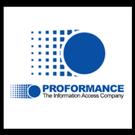WHATARETHE SERVICES INCLUDEDIN COLLATERAL MANAGEMENT?





In OTC (Over Counter) markets, it is common for collateral to be moved. The repos or repurchase agreements, cash loans backed by securities, are the most well-known collateralized transactions. Securities lending and borrowing are both ways of getting cash or other securities in exchange for a loan of securities. On the OTC derivatives market (swaps and credit derivatives), it has also become common to back transactions with collateral.

Most of the time, a clearing house works with organized markets for securities or derivatives. The clearing house takes the participants' place, becoming both the buyer and the seller for everyone (novation mechanism). So, it takes on the risk of the other party instead of them. To protect against this risk, it will ask for security deposits or collateral, whose value will be based on how many positions each participant opens. Margin calls happen when these positions are reevaluated daily based on market prices.

A country's central bank is one place where commercial banks can get money. In the Eurosystem, as in most other countries, the central bank will only give these loans if there is bank collateral management system cms to back them up. Such guarantees could be securities that can be bought and sold. The list of securities that the Eurosystem can refinance is updated regularly and posted on the ECB website. Credit institutions can also use credit claims on nonfinancial debtors (like corporations) as collateral.

